Individuals
11
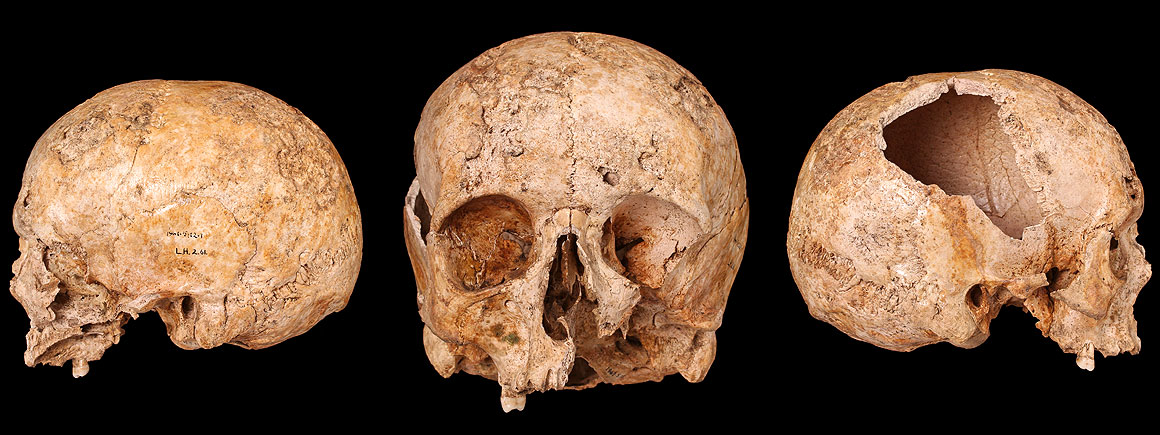
Skull of a male with tertiary syphilis from Ludgate Hill cemetery
11
11
This collection represents a pathological collection of post-medieval remains from a number of individuals that were uncovered from Ludgate Hill.
According to archival documentation, this series of pathological specimens (PA SK 4009-4019) originate from Ludgate Hill Cemetery which was in use from about 1500 to 1800.
Today this might be the site of St Martin's Church.
The collection represents the remains of at least 11 different people and were received in exchange from SA Balwdin, Esq. MPS in November 1961.
An incomplete cranium of an adult male with pathological changes from tertiary (late-stage) syphilis.
The disease causes extensive damage to the cranium.
There are numerous foci of caries sicca (lytic lesions) and stellate (star-like) scarring throughout, giving the cranial surface a moth-eaten appearance. The infection also penetrated the outer table of the bone and there is a perforation into the frontal sinuses.
Seven thoracic vertebrae from an adult which are ankylosed (abnormally adhered) together.
This individual suffered from a condition which caused ossification of the spine.
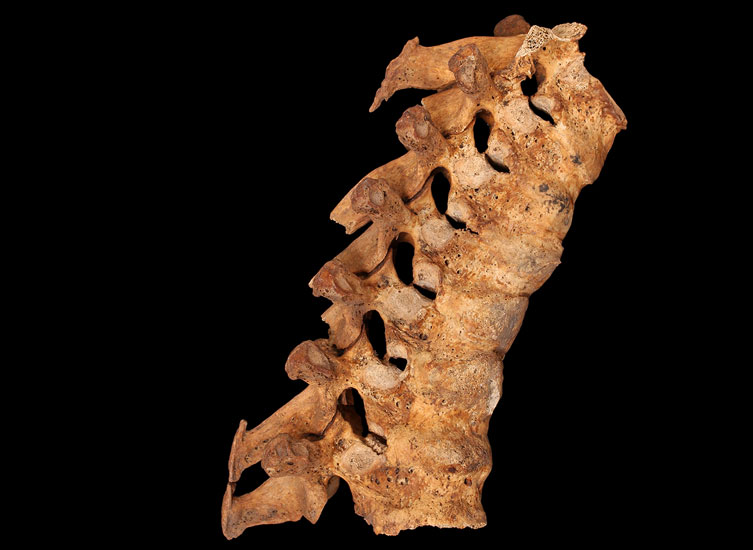
Thoracic vertebrae exhibiting pathological changes from diffuse idiopathic skeletal hyperostosis (DISH).
The bodies of the fourth to the ninth thoracic vertebrae have fused due to syndesmophytes (bony growths originating inside ligaments) along the right anterior surfaces of the bodies. The resulting smooth 'candle-wax' effect from this extra bone growth is characteristic of diffuse idiopathic skeletal hyperostosis (DISH).
The spinous processes of some of the vertebrae also exhibit hypertrophic bone. Arthritic changes are also common in individuals suffering from DISH and nearly all the vertebrae exhibit osteoarthritic changes to the rib and transverse process facets in the forms of porosity, erosion, lipping and osteophyte formation.
The fourth thoracic vertebra also has eburnation and joint changes to the superior articular facets. The inferior surface of the body of the tenth thoracic vertebrae also exhibits Schmorl's nodes, or intravertebral disc herniations.
Right femur of an adult.
It has very obvious thickening of the proximal head and whole shaft with abnormal woven bone matrixes, characteristic of Paget's bone disease (osteitis deformans).
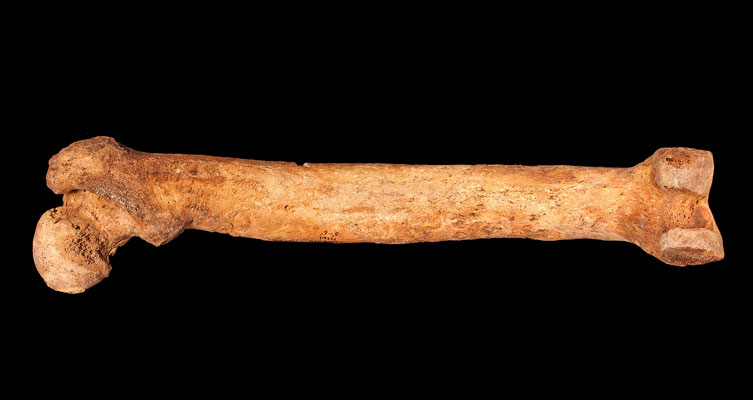
Right femur of an adult with excessive thickening of bone from Paget's disease
This disease causes the excessive breakdown and formation of bone, followed by disorganised bone remodelling.
The individual would have had weakened bone, and the observed arthritic changes to this femur were likely associated with this condition.
A left and right femora and left tibia of a young adult (MNI 1).
From femoral head and bicondylar widths this individual is a probably female (Bass 1995), but sex estimation is tentative due to pathological bone changes.
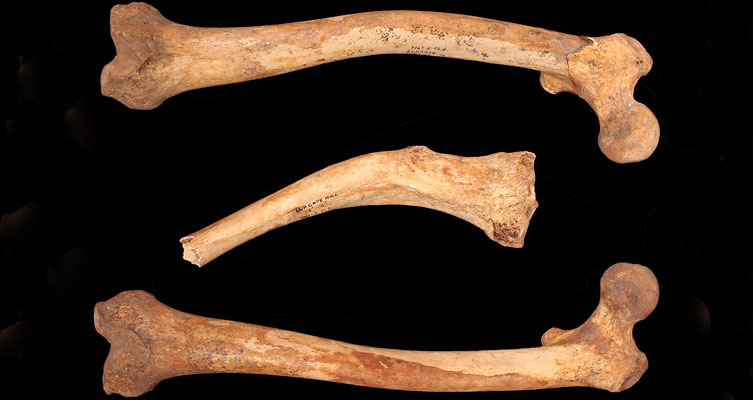
A left and right femora and left tibia of a young adult with rickets
This individual has bowed bone shafts due to rickets - the defective mineralization or calcification of bones leading to deformity.
There is also bilateral osteoarthritis on the anterior surfaces of the femoral heads, in the forms of porosity, erosion and slight eburnation.
The left tibia also has possible myositis ossificans of the semi-tendinous muscle on the superior medial part of the shaft.
A mandible of an adult of indeterminate sex with two healed fractures that changed the appearance of this individual's jaw.
One fracture runs obliquely through the body below the right second incisor to the second right molar, and the other the through the left ascending ramus below the condyle. The blunt force appears to have come from the front-left side, displacing the left side of the mandible and resulting in misaligned bone. This left a gap at the dental sockets, culminating in a large abscess below the first and second right molars.
This individual additionally suffered from three carious lesions (tooth decay) and slight dental calculus (hardened plaque) adhesions.
Although poor by today's standards, this individual's dental hygiene was not as bad as we might expect given the trauma and malformation of the mouth that they sustained.
The upper shaft of a severely malformed left femur from a displaced fracture.
This individual was adult but their sex is indeterminable from the available evidence.
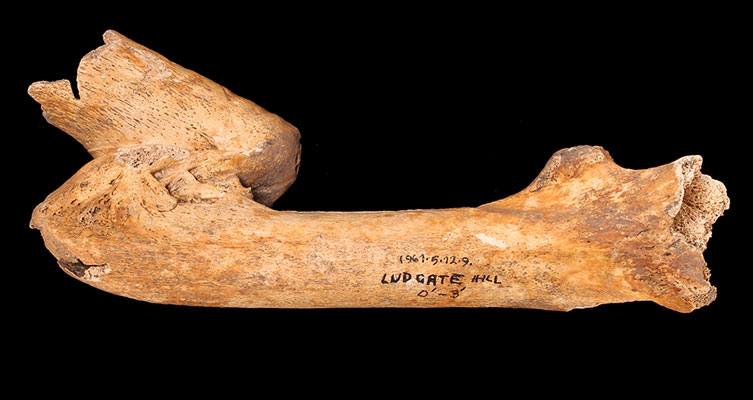
A femoral shaft with severe displacement resulting from fracture
A break to the femoral shaft caused the lower half of the bone to be displaced anteriorly (upwards) by approximately 70 millimetres and at an angle of approximately 35 degrees posteriorly.
The trauma occurred ante-mortem (during life) as the bone exhibits advanced healing with an extensively remodelled callus.
This person would have not been able to use this leg normally as the lower part would have been visibly angled to their rear and it would have been a few inches shorter than the other.
The London human remains collection has been digitised
If you would like to use any specimens for research, please get in touch
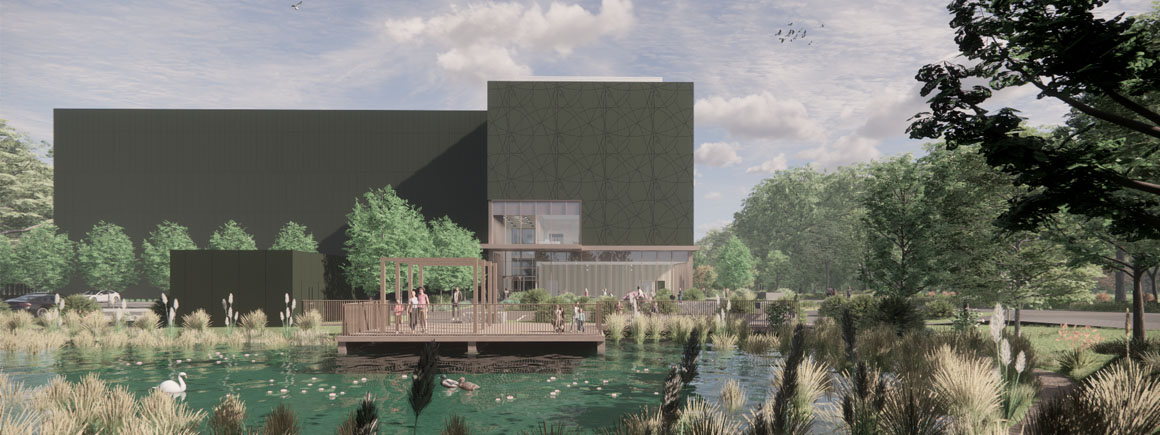
Access to some collections will be affected as we prepare for the move to our new collections, science and digitisation centre.
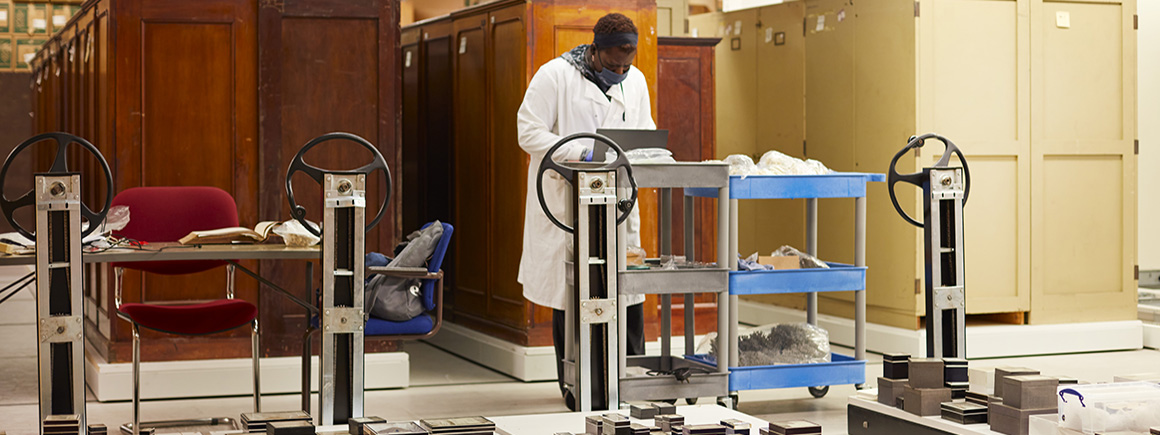
Scientists and collections management specialists can visit the collections and borrow specimens for research.
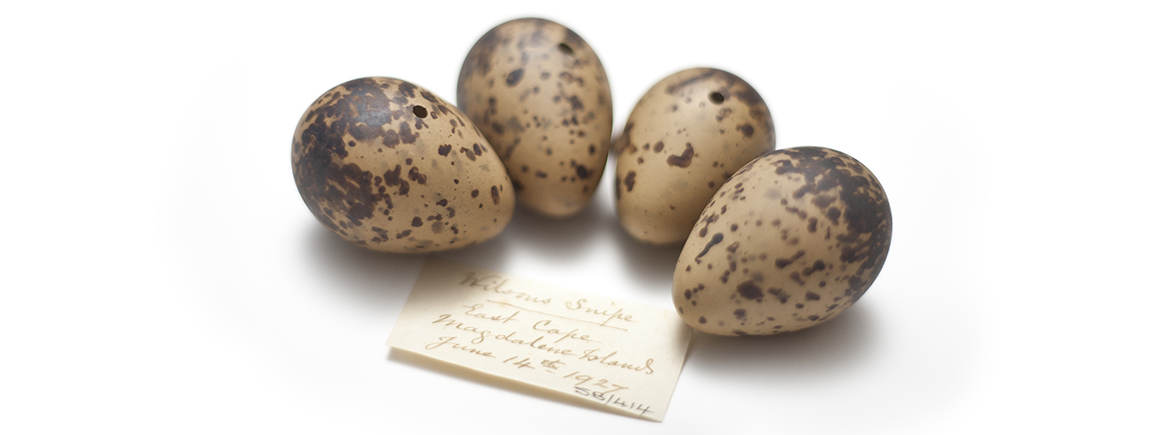
Our duty is to provide a safe and secure environment for all of our collections.